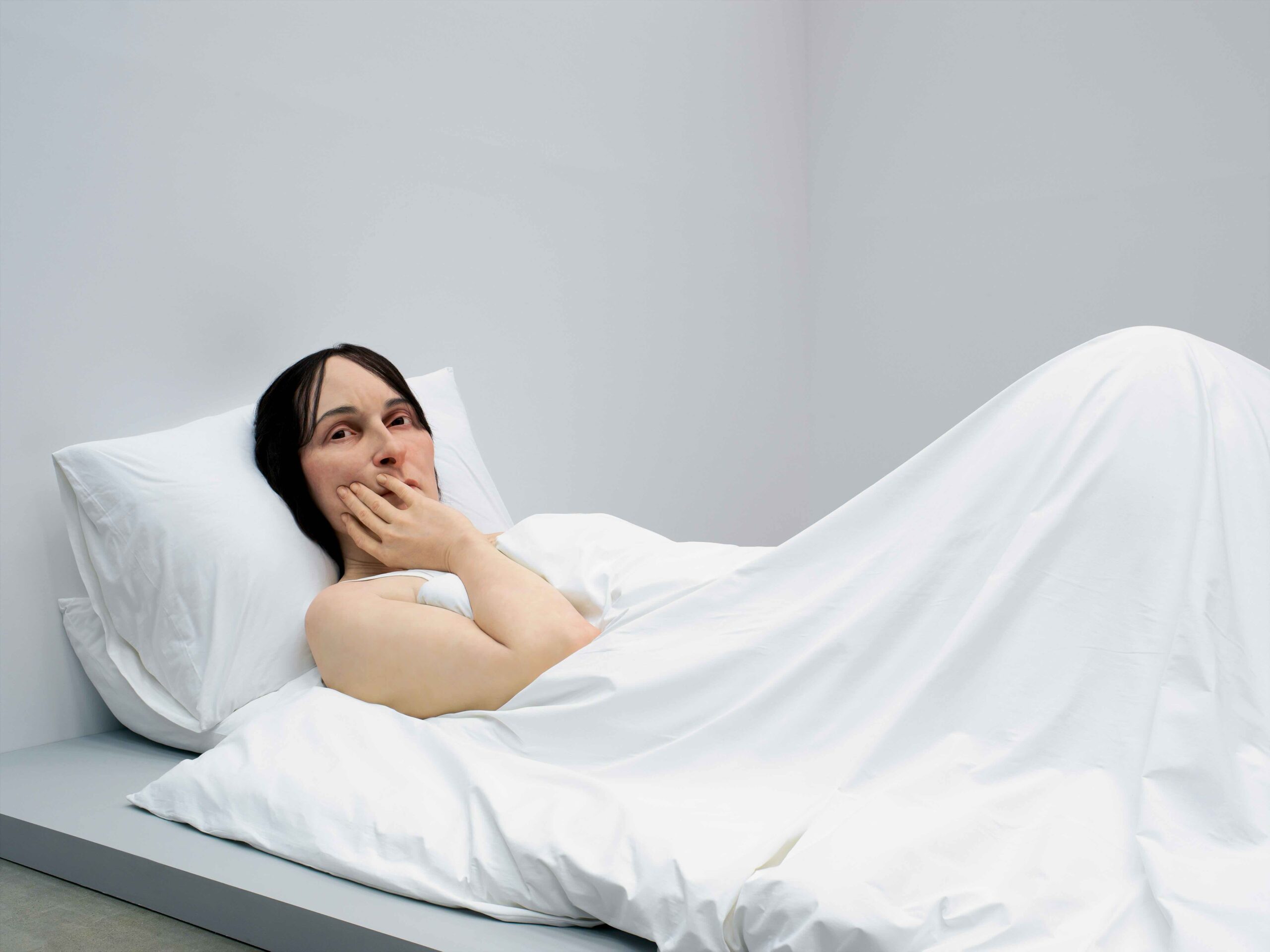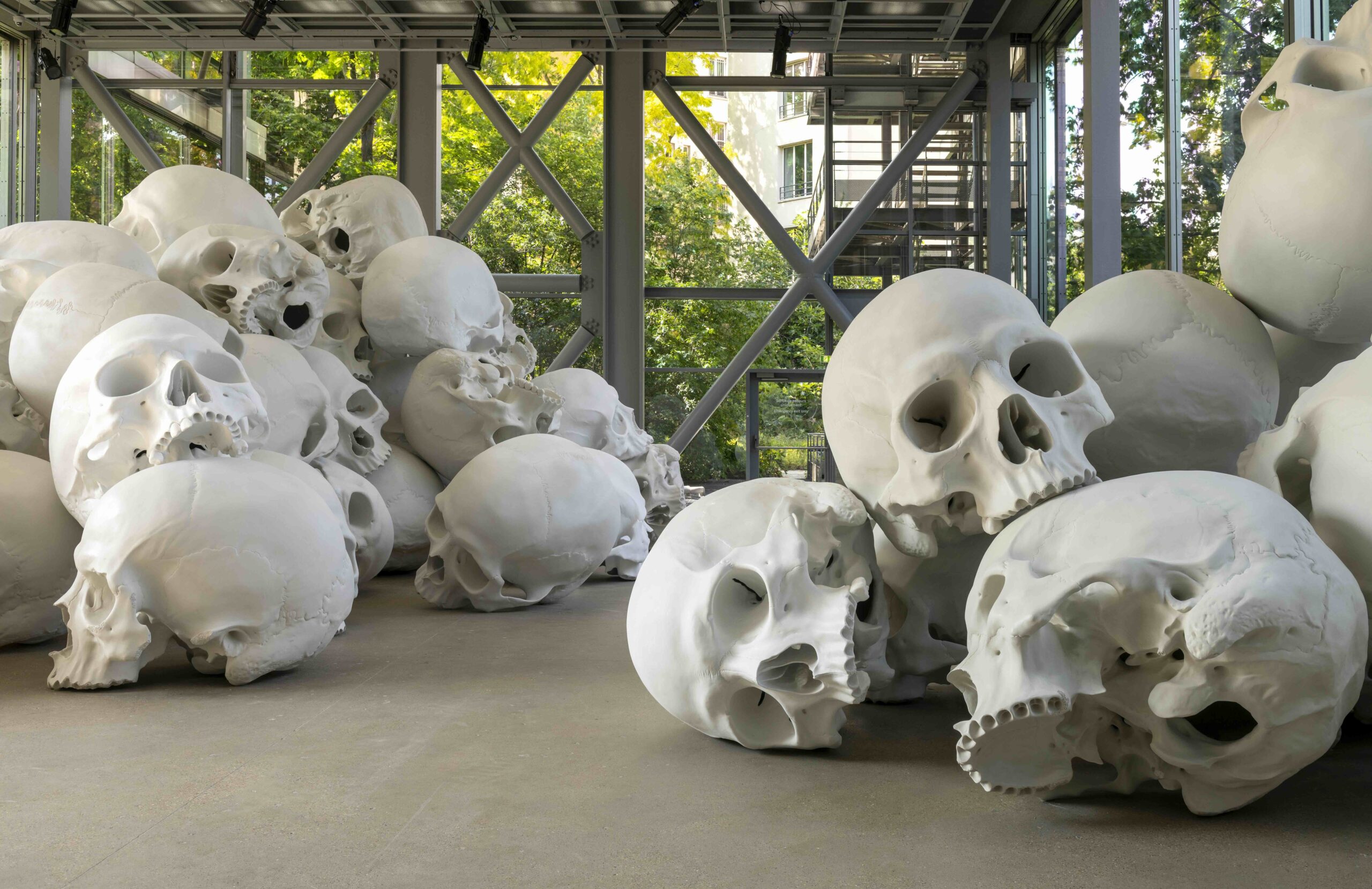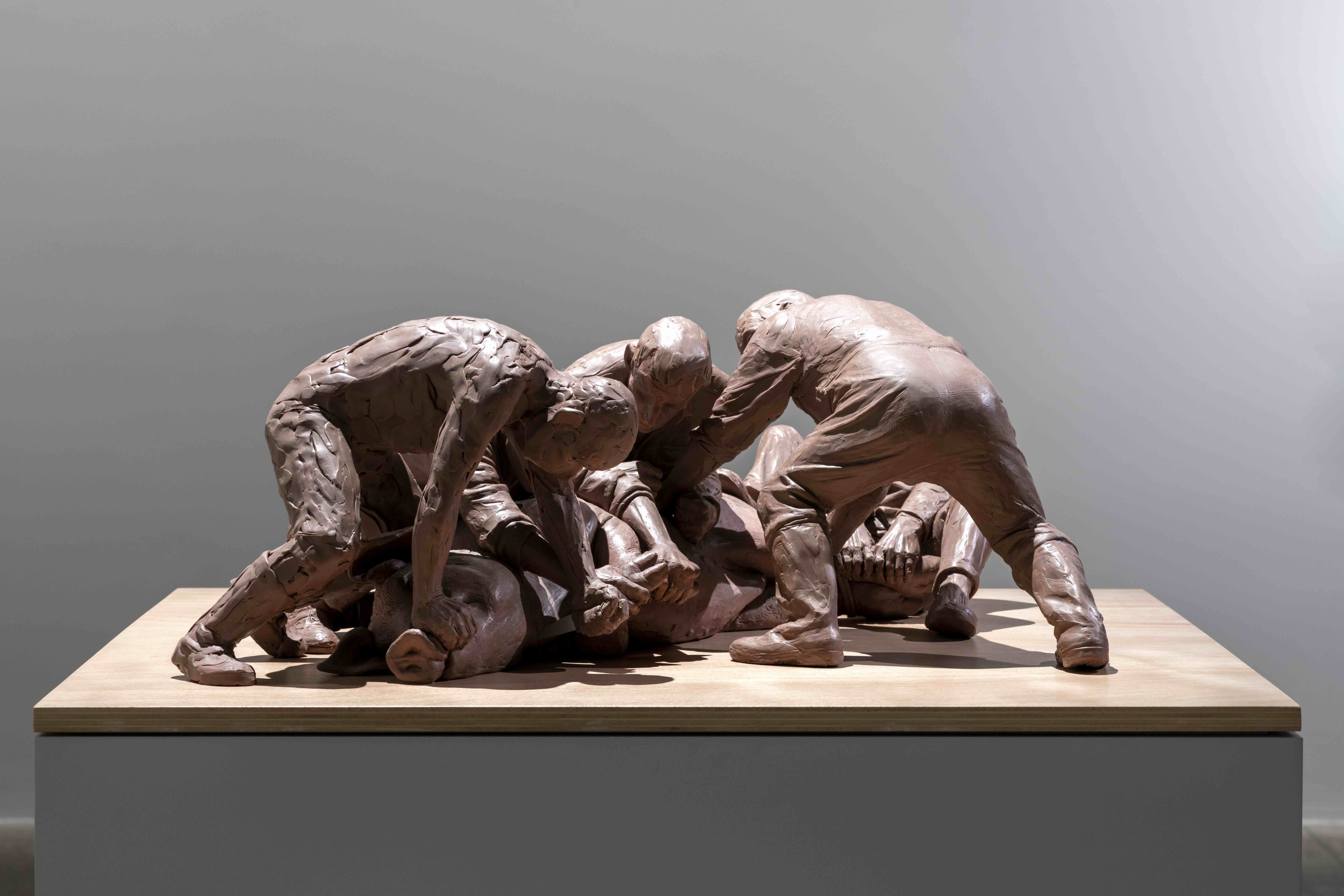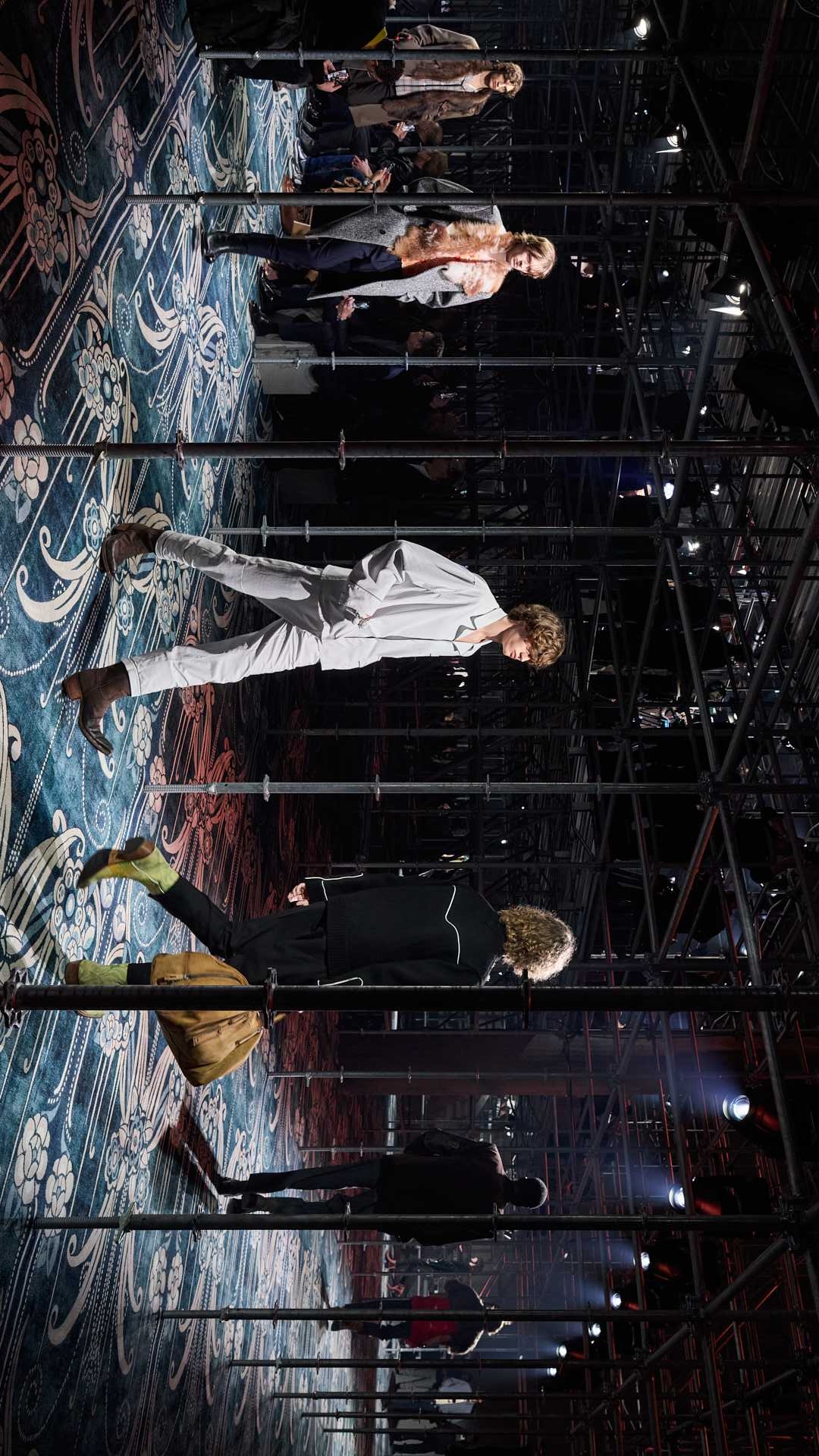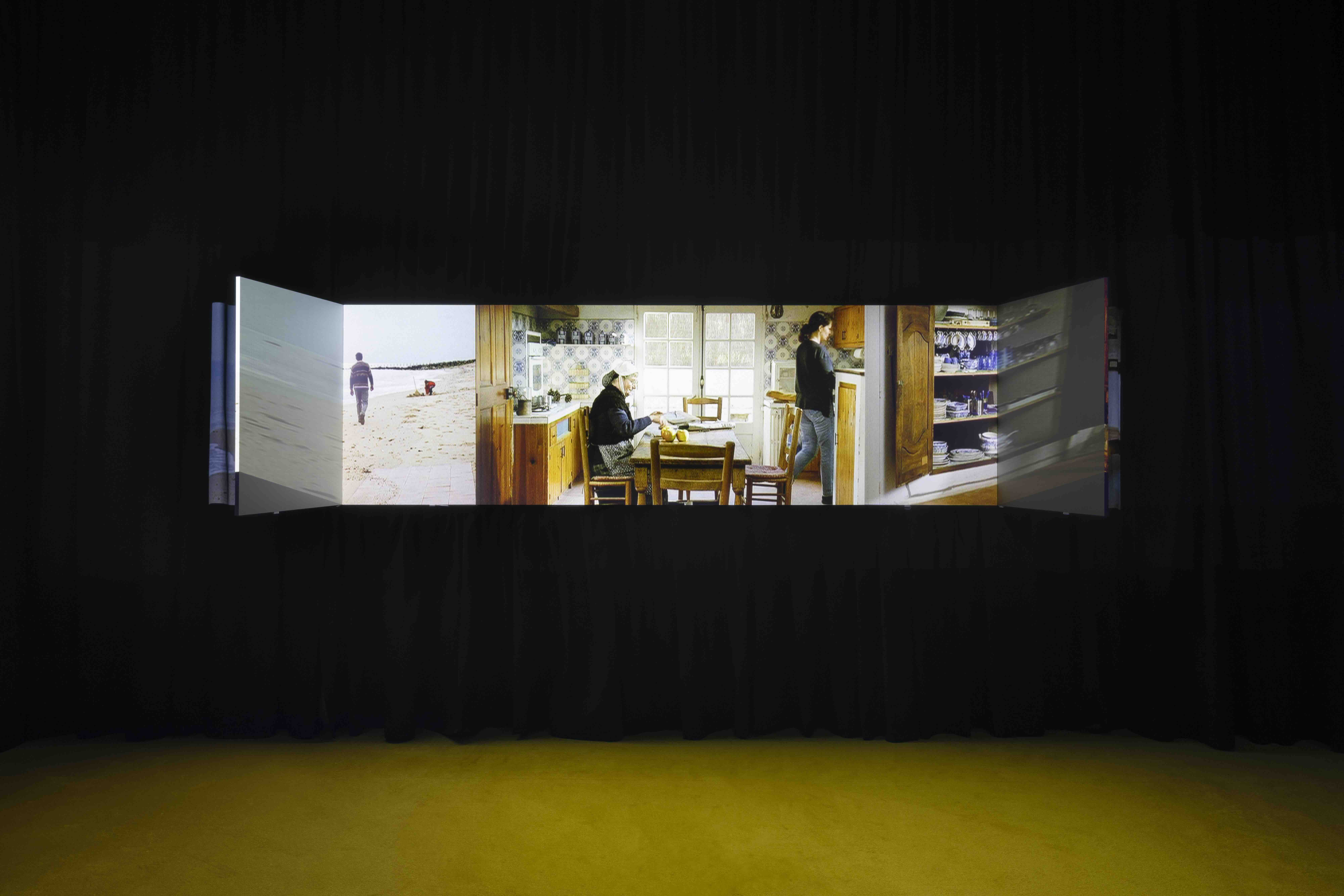Australian artist Ron Mueck‘s first Italian solo exhibition takes place at the Triennale Milano, a venue that has always managed to capture the contemporary need for a radical outlook toward the visual and performing arts. The exhibition is also an opportunity to highlight the enduring partnership between Triennale Milano and Fondation Cartier pour l’art contemporain, European institutions characterized by a multidisciplinary approach that share a common vision on contemporary culture and artistic creation. The Ron Mueck exhibition is in fact the evolution of the exhibition project held in Paris in the summer of 2023, conceived by Fondation Cartier in close collaboration with the artist, the third stage of an unceasing dialogue between the sculptor and the French institution, which began in 2005 and continued in 2013. The exhibition at the Triennale consists of six works that incessantly ask the viewer to be inhabited: the feeling in front of In Bed (2005), a gigantic depiction of a woman lying in bed, her head raised against pillows, is one of concern, perhaps concealing a desire to mock the viewer by subduing him and instilling in him a strong inferiority complex. But despite the colossal size, the sculpture appears delicate and intimate: the outsized dimensions alter the perspective, creating a feeling of closeness with a person whose thoughts seem to be turned elsewhere. The tour continues with the monumental installation Mass, 2017, exhibited for the first time outside Australia in this project that illustrates the most recent developments in Mueck’s artistic practice.

“The human skeleton is a complex object. A powerful, graphic icon that we immediately recognize. At the same time familiar and exotic, the skull simultaneously disgusts and fascinates. It is impossible to ignore, demanding our attention on a subconscious level.”
In its monumental scale and ambition, Mass is the work from which the the exhibition and represents a milestone in the artist’s career. Commissioned by the National Gallery of Victoria (Melbourne, Australia), it is an installation composed of one hundred gigantic sculptures of human skulls arranged in dialogue with the exhibition space. The installation offers a physical and psychological experience that captivates visitors and encourages them to reflect on the fundamental aspects of human existence. The title offers a glimpse of the different interpretations to which the work lends itself. Indeed, the English word “mass” can be traced to multiple meanings, from “messy heap” to “religious function,” which are starting points for each viewer’s personal experience when confronted with the work. The very iconography of the skull is ambiguous: associated with the brevity of human life in art history and ubiquitous in popular culture.
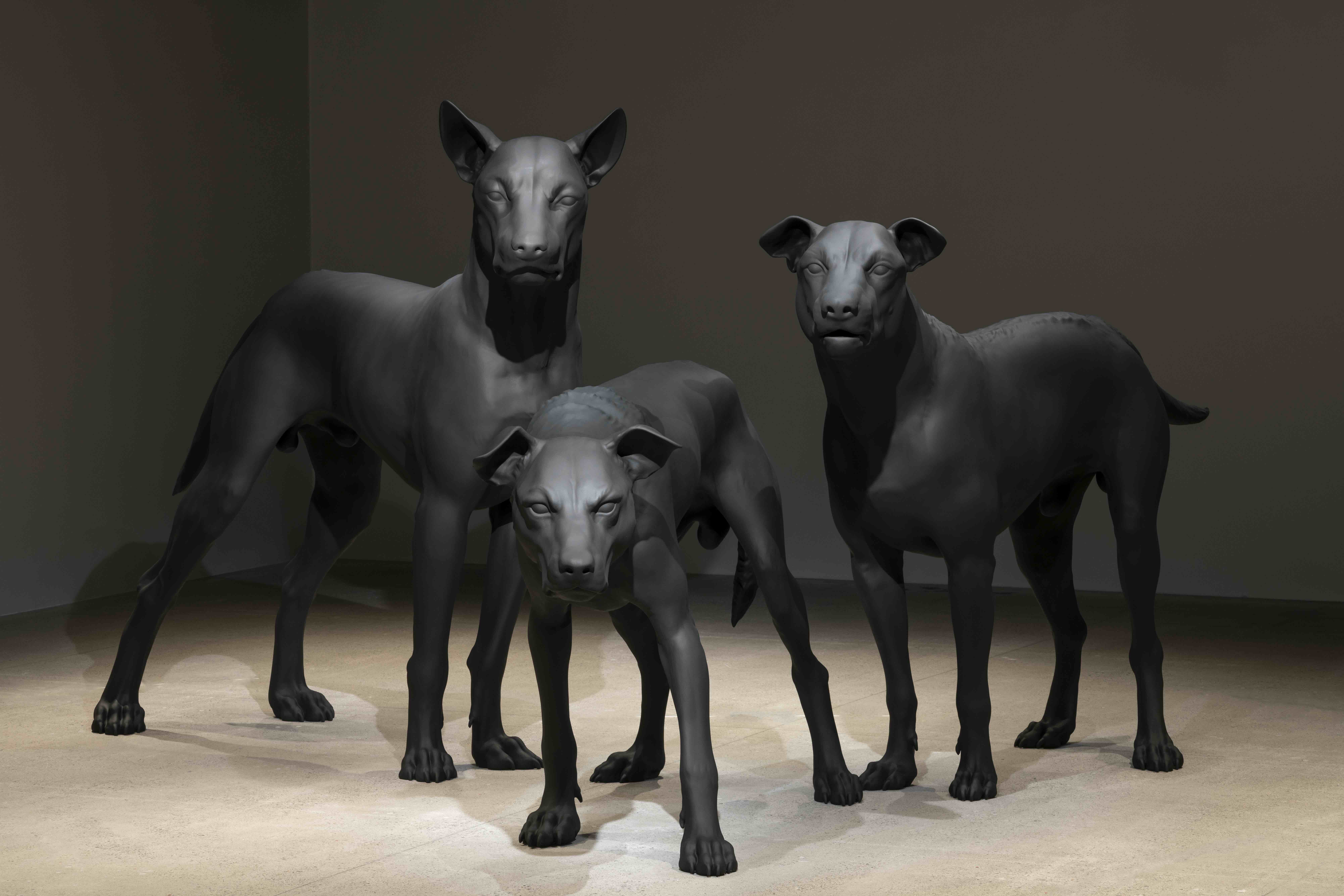
Also central to the exhibition are two films by French photographer and filmmaker Gautier Deblonde, whose images capture the atmosphere of Mueck’s studio and his working methods over the past twenty-five years. These films, shot in the artist’s studios and during the creation of sculptures for exhibitions and presentations, offer a rare insight into the artist’s daily practice. These films were commissioned over time by the Fondation Cartier to accompany Ron Mueck’s exhibitions. Entering the second room and passing through the work Garde (2023), a spectacular and menacing group of dogs nearly ten feet tall whose immediate ferocity frightens and threatens the viewer, one finds in the background, in contrast, a very small sculpture named Baby (2000), a naked infant inspired by an image from a medical book where one sees a baby held by the feet moments after giving birth. In contrast to the postmortem Mass, this small portrait of the first moments of life focuses attention on an intense subject. By inverting the original image and fixing the sculpture to the wall, the artist creates a cross shape that invites contemplation as if it were a religious icon, marked by what appears to be, on closer inspection, a spiteful expression. The work of Ron Mueck and his body of sculptures, represents a deeply mysterious and at the same time extremely genuine research in the contemporary scene, often pervaded by a surreal aura, invites reflection on one’s relationship with the body and more generally, leads one to confront existence itself.
For further information triennale.org
